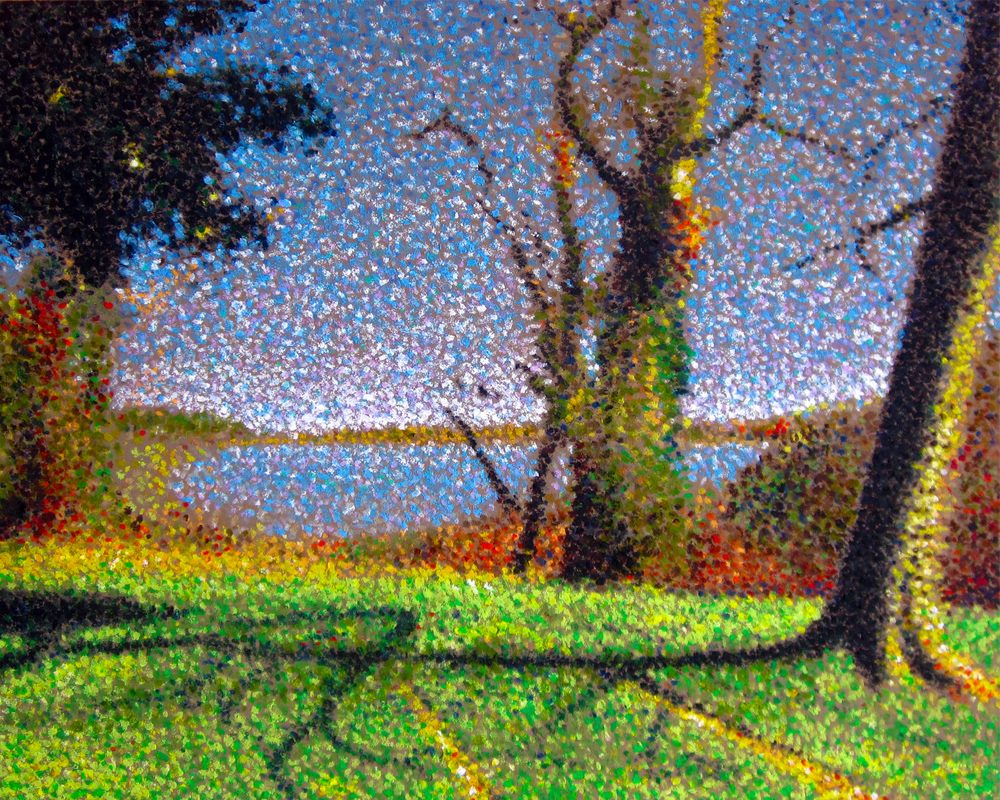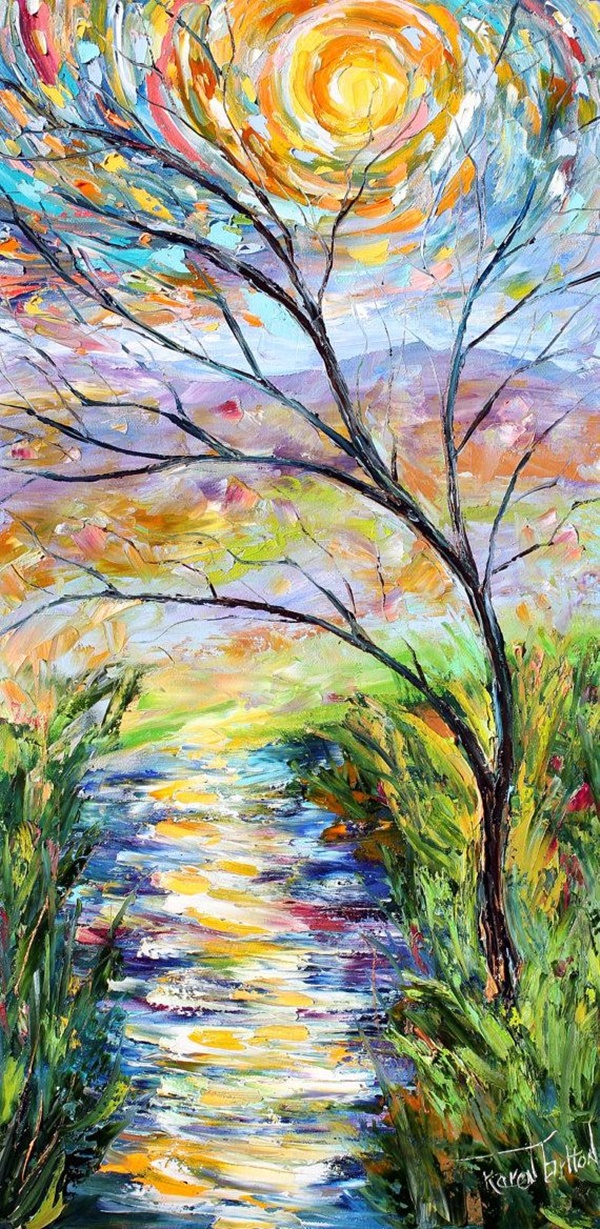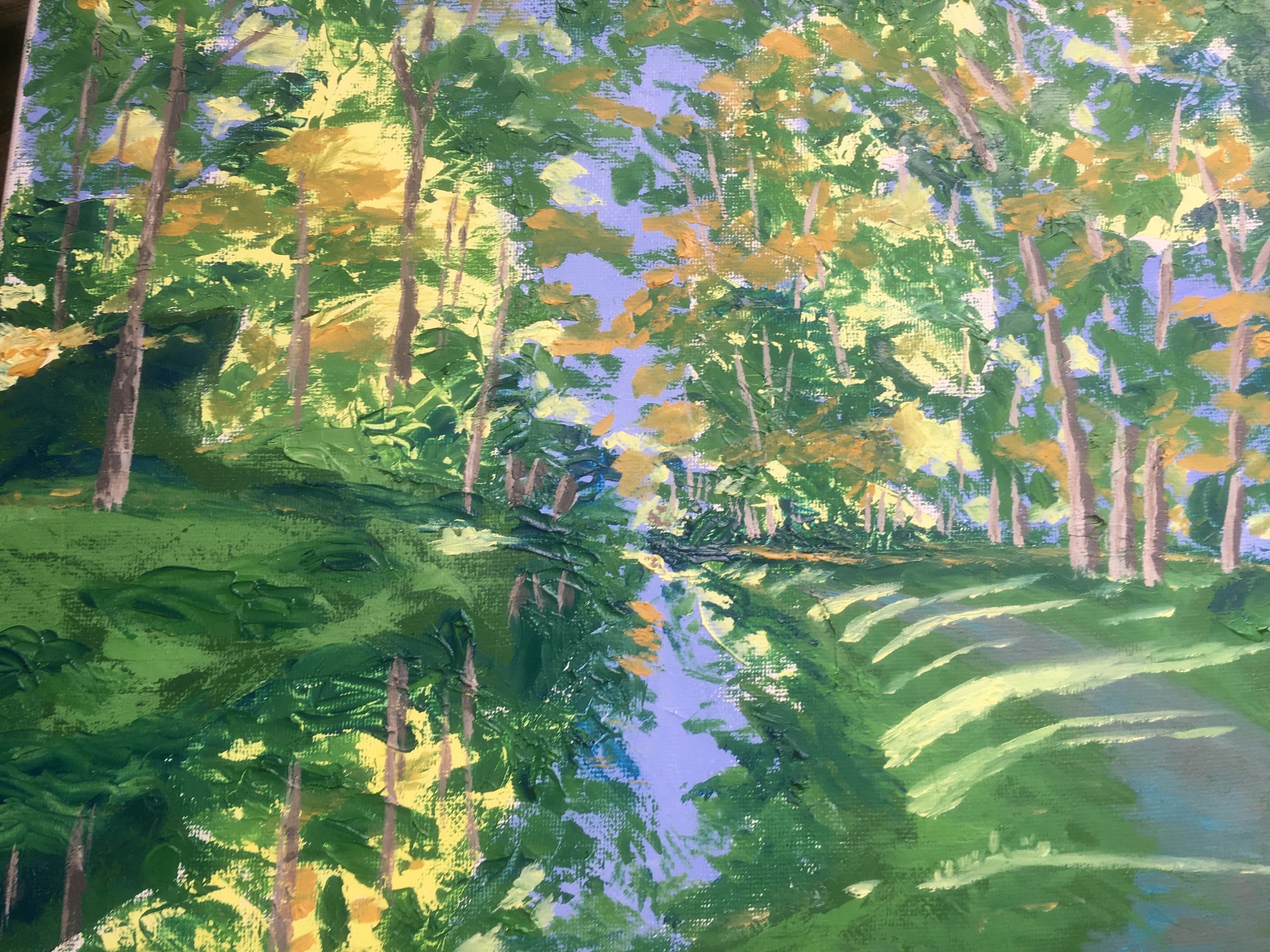
Subject is landscape, everyday scene or still life of everyday items.I needed to incorporate the key features: Trying to paint in the style of the Impressionists by following their philosophy and their painting techniques The Impressionist painters used layers of colours, leaving gaps in the top layers to reveal the colours underneath. The technique is achieved through hatching, cross-hatching, stippling, drybrushing, and sgraffito (scratching into the paint). Mixing of brighter colours is done directly on the canvas to aid in creating the broken colour effect and only darker colours are mixed on the palette.Ĭomplementary colours were often used in Impressionistic painting to add vibrancy. They used Optical Mixing rather than mixing on the palette.īroken colour refers to the effect of blending colours optically rather than on the palette, eliminating perfect coverage and smoothly-blended transitions.This technique of painting outdoors helped impressionists better depict the effects of light and emphasise the vibrancy of colours. Impressionists often painted at a time of day when there were long shadows.Impressionists did not use the thin paint films and glazes that were popularised by Renaissance artists. The surface of an Impressionist painting is opaque.Impressionists avoided hard edges by working wet into wet.Complementary colours were used for their vibrant contrasts and mutual enhancement when juxtaposed.The Impressionists lightened their palettes to include pure, intense colours.A thick impasto application of paint means that even reflections on the water’s surface appear as substantial as any object in a scene.Quickly applied brush strokes give the painterly illusion of movement and spontaneity.They used short, thick strokes of paint to capture the essence of the object rather than the subject’s details.Impressionists strongly emphasised the effects of light in their paintings.The painting techniques that they used to achieve their ideas were fairly consistent: They were interested in visible light reflected from a surface, and wanted to show the surface of objects.Ĭlaude Monet Grainstacks in the Sunlight, Morning Effect, They were affected by the scientific discoveries of the time about optics and light. Impressionist painters tried to express this experience. When we look at a landscape, or a crowd of people, we do not instantly see every face or leaf in detailed focus, but as a mass of colour and light. There was also the idea of painting the impression of a first glance at something. This moment of light now, as compared to the moment of light in an hour from now.

The Impressionists redefined what it meant to capture reality to mean: to capture a specific moment. They were interested in painting everyday reality instead of monumental scenes. Some of the most famous artists associated with the Impressionist movement are: Claude Monet, Eugene Boudin, Camille Pissarro, Alfred Sisley, Édouard Manet, Edgar Degas, Paul Cezanne, Auguste Renoir, Berthe Morisot, and Mary Cassatt. It makes me think of people today who complain that contemporary artists have no skill or are trying to put one over on the public, radical ideas and change require time to be accepted. The term ‘Impressionist’ was first used as an insult by an art critic at the exhibition of new paintings in Paris in 1874 referring to a work by Monet which was entitled ‘Impression, sunrise’ and a reviewer of the first exhibition described the painters as ‘lunatics’.

The work was so different to what was considered accomplished artwork at the time that they were ridiculed.

This resulted in work with loose brushwork that looked un-finished or messy compared to the accepted work of the time. Because they painted outside, the Impressionists had less time to mix colour and painted quickly to keep up with the ever-changing daylight.

Because they were interested in light these artists left the studio and began painting en plein air. Instead of the photo-quality realism of a highly blended finish with invisible brush strokes that was the accepted manner of painting at the time, Impressionists aimed to capture the momentary, fleeting effect of a scene on the eye, especially the effects of light. It started in the 1860s in Paris and the ideas of the movement spread throughout Europe and eventually to the United States. Many art historians consider Impressionism to be the first distinctly modern movement in painting. 1872 What the Impressionists were trying to achieve


 0 kommentar(er)
0 kommentar(er)
